Magic the Gathering has changed a lot over its multi-decade history. Not until Savannah Lions was reprinted at common in Masters 25 did I come to understand how much creatures have changed over the history of the game—let alone what makes for a rare card. At Magic’s inception, rarity was Richard Garfield’s method of balancing the game. The idea was that since people might only spend $20 to $40 on cards and those cards would be randomized, you could sit down to play a game with someone who had cards that you had never seen before—possibly never even heard of.
The rares of Alpha were meant to be the best of the best when it came to Magic. But as we now know, what was thought to be powerful then is not the same as what we know to be powerful today. So I would like to examine eight commons currently in Standard that I believe could have been deemed rare in 1993.
We’re going to be playing loose with the history and available technology of Magic to allow creatures and spells that would have required a lot of extra rules text to properly function in early Magic. I intend to display the varying power of Alpha, while also commenting on how powerful different elements of game have become since its inception.
8. Locthwain Paladin
Right off the bat, we have Locthwain Paladin—a card that could have easily been a rare in Alpha simply for it being better than the uncommon Bog Wraith in many respects. While menace wouldn’t be introduced into the game until Fallen Empires, Richard Garfield built Magic on a card-to-card basis with little worry about keeping the terminology of the game tight. It seems conceivable that he might have envisioned black having creatures that were hard to block in ways beyond swampwalk and fear.
In early Magic, there was a fine line between what was a decent creature versus an amazing one. Even if it didn’t pass the vanilla test everytime it was cast, it seems very plausible that a hard-to-combat knight that rewarded you for playing mono black would have been a force to be reckoned with at a time when creatures were not what they are today.
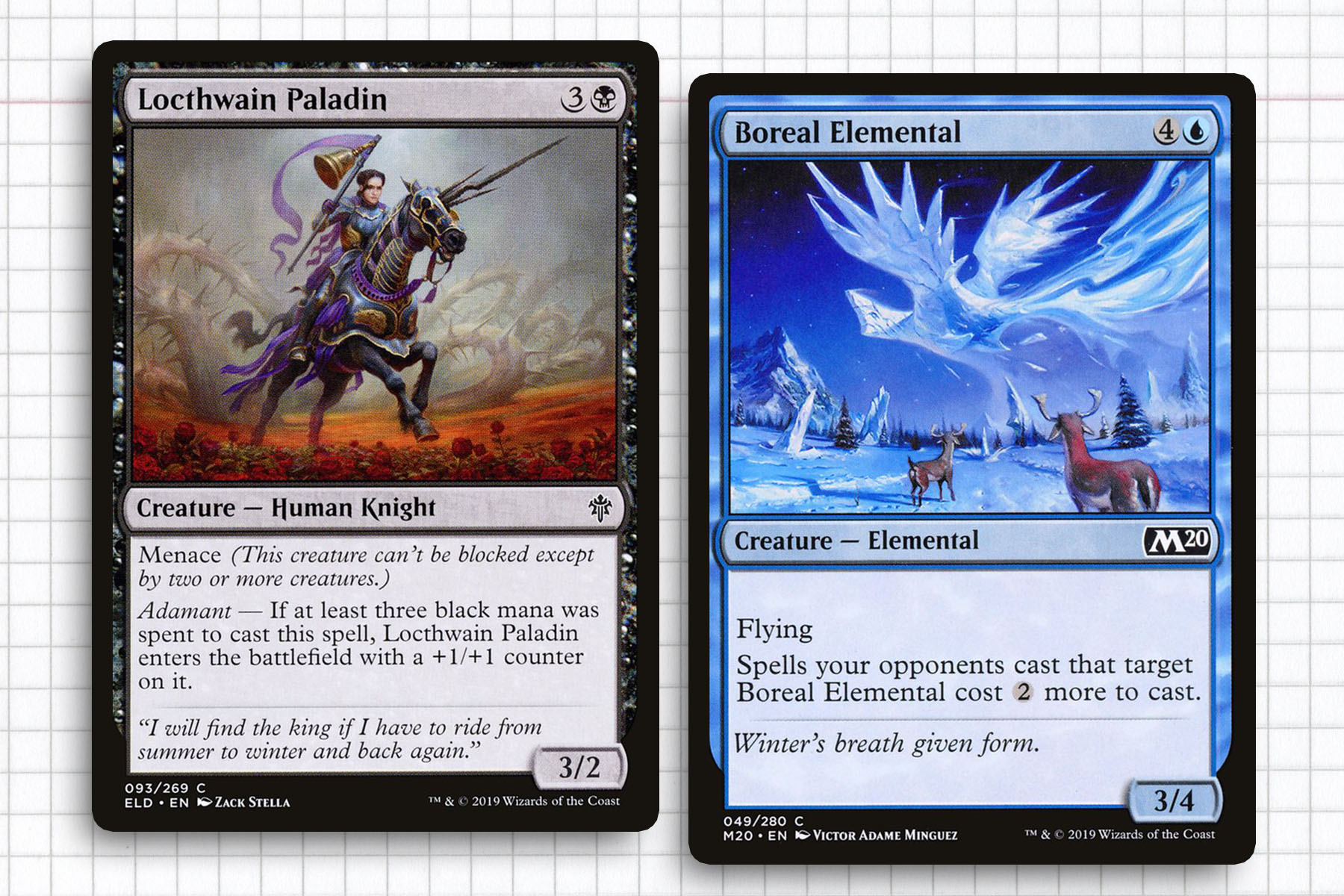
7. Boreal Elemental
In retrospect, Serra Angel could have been a rare and no one would have felt cheated. While Boreal Elemental would not have been able to compete against Serra Angel across the table, together they would have made for a potent strategy. Even comparing Boreal Elemental against something like Air Elemental may not be that impressive, but an easy to splash 3/4 that invalidates most of the pinpoint removal would have been a notable control finisher.
6. Nyxborn Colossus
Coming in bigger than Craw Wurm and more mana efficient than Force of Nature, Nyxborn Colossus is a promisingly powerful creature. During the early years of Magic, there was a belief that creatures needed to be given some kind of downside if they were big enough to be finishers.
The only drawback to having a creature like Nyxborn Colossus running rampant when creatures were proportionally weaker is that with seven toughness it would have been nearly unstoppable. It’s bizarre to think just how overpowered the Colossus would be, requiring it to be rare for it to be properly balanced for a metagame where rares are actually unlikely to be in the hands of every player.
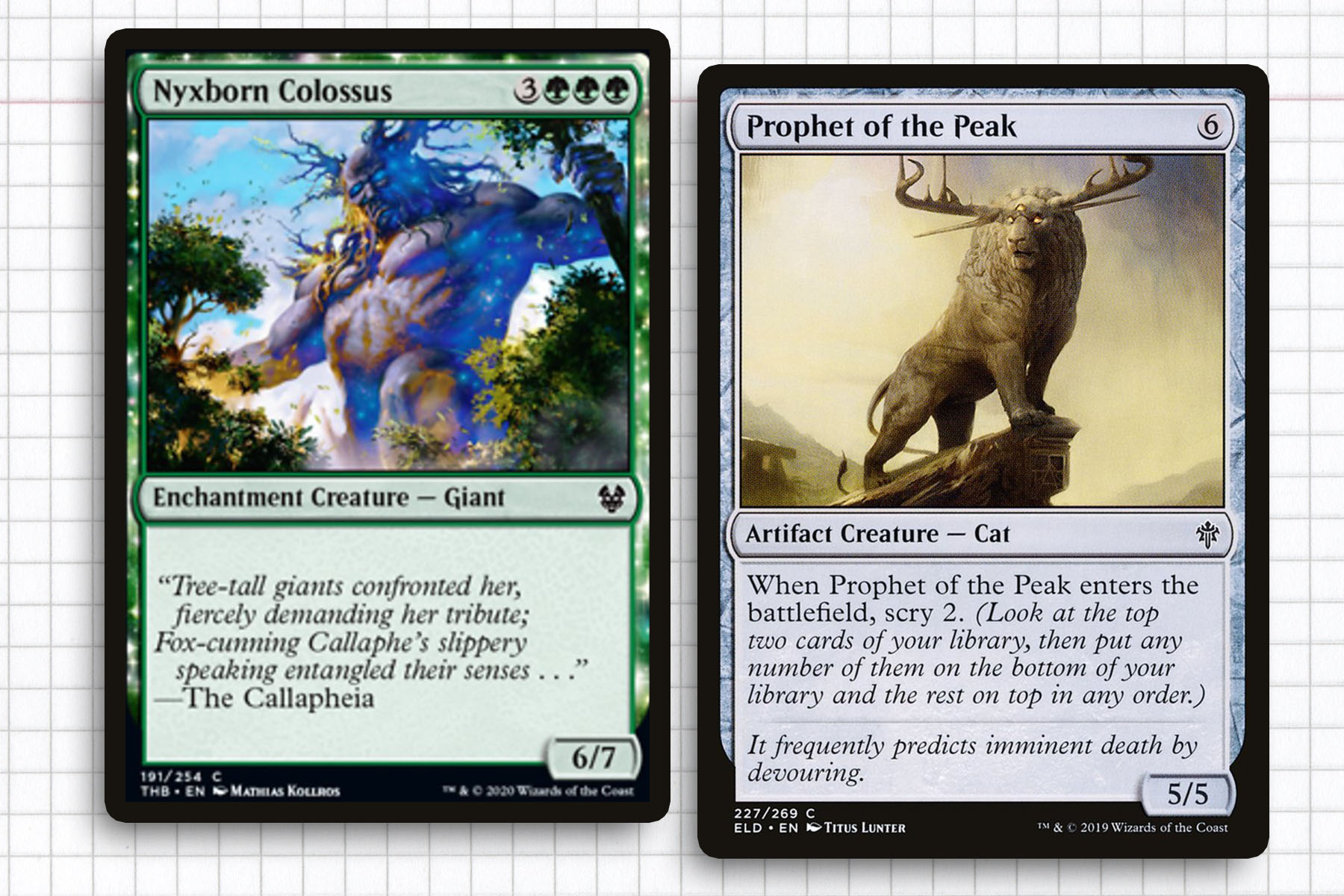
5. Prophet of the Peak
Prophet of the Peak would have easily been the most consistent artifact creature in Alpha. Not always the biggest, but a 5/5 artifact creature for six plus Scry 2 when it enters play is a great top of the curve threat that is outclassed by only a few creatures of early Magic. As with much of my list, even for a virtual vanilla creature—I will remind you that enters the battlefield triggers were not actually introduced to Magic until Mirage—being close to or on curve for their size is enough for them to stand out.
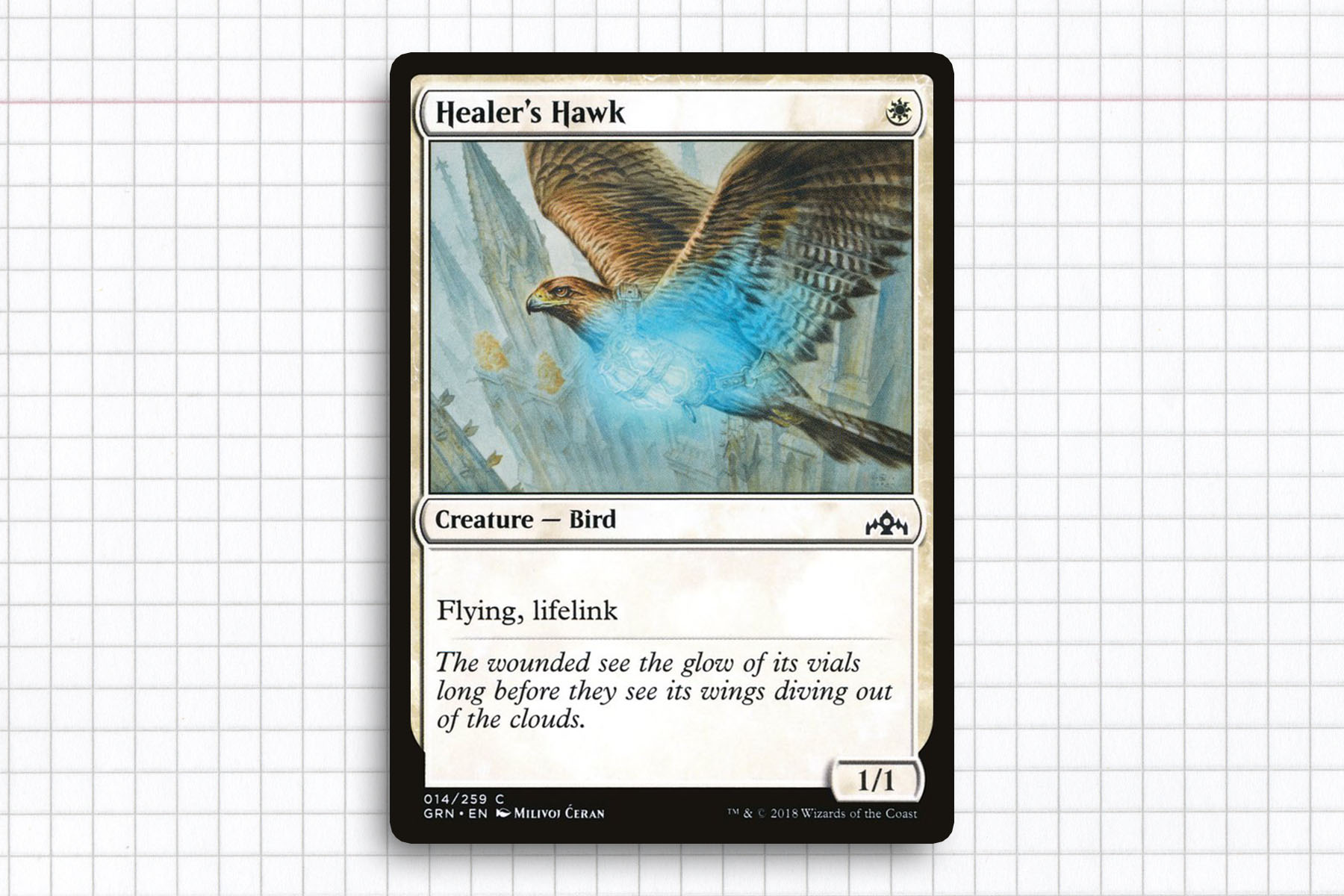
4.Healer’s Hawk
I have talked about how I have worked on custom Magic sets before, researching design philosophies and understanding how Wizards makes sets on a nuts and bolts level. Regardless of the quality of the cards I’ve designed, I can wholeheartedly say Healer’s Hawk is a power-level-redefining common and something that I believe would have been as sought-after as Savannah Lions had it been around in the early years of Magic. It would not be a stretch to imagine what a White Weenie deck would have looked like at the first Pro Tour had you been about to have this flying lifelinker in play one turn. And I think more creatures like this would have saved the reputation of the card type at the game’s inception.
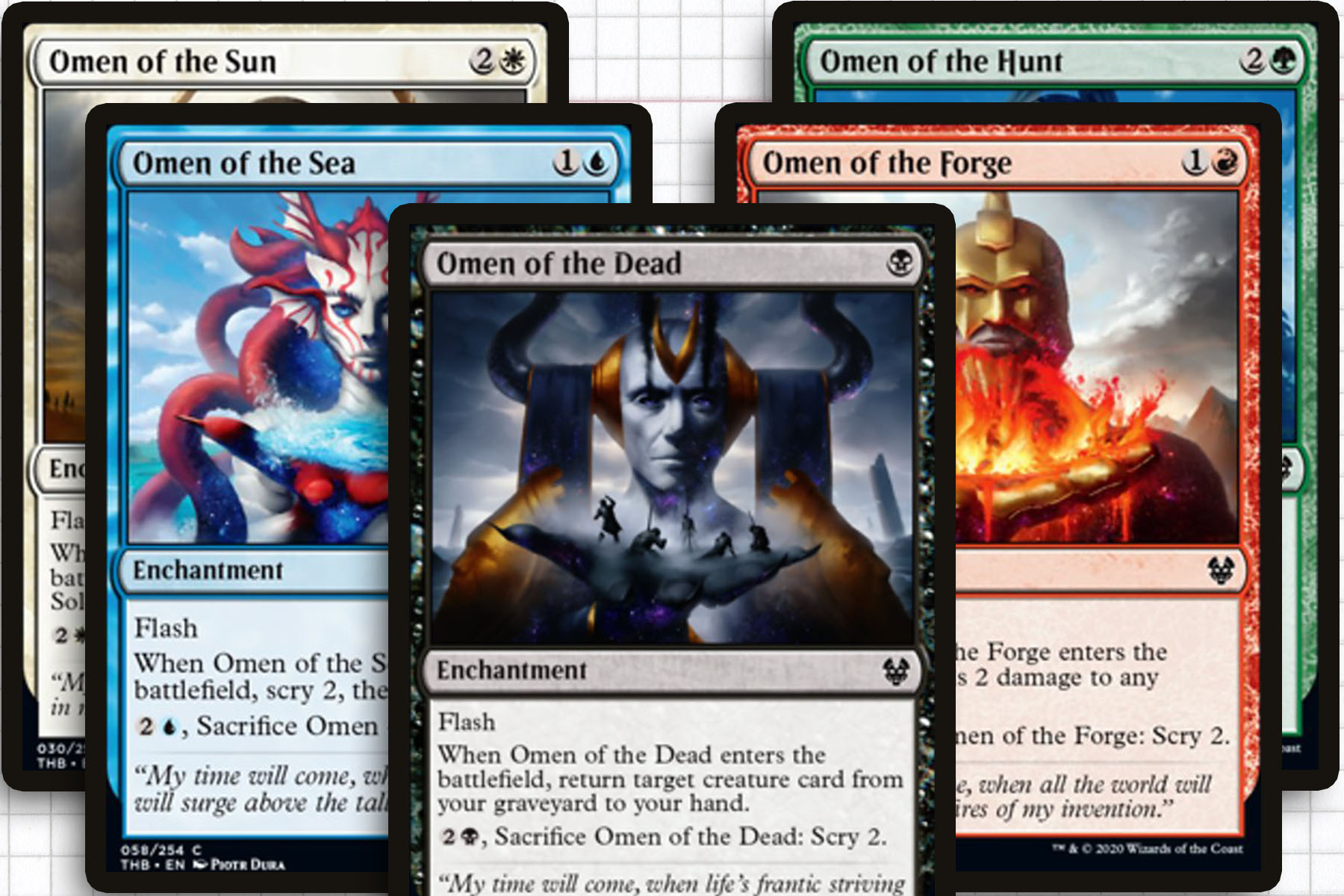
3. The Omen Cycle
In terms of what they were capable of, the cycle of enchantments in Theros Beyond Death may be more powerful than many of the enchantments early Magic, while still being common. Enchantments like these that have two varying effects are fantastic. Beyond the fact that the scry ability that all five share is varying levels of powerful within the context of each color, all five enter the battlefield doing something emblematic of respective color all for three or less mana with flash. I think Omen of the Sun might be my favorite of the cycle, recalling my nostalgia for Raise the Alarm. But having Shock, Raise Dead, Rampant Growth, or Preordain stapled to a Scry 2 when I am looking to sculpt my draws later offers more card advantage than most players would have known what to do with in 1993.
2. Skyknight Legionnaire
At one mana more than Nether Shadow, Skyknight Legionnaire not only has haste but also flies. Being multicolored in Alpha would have already been enough to make this card rare—even though it would have predated the concept. I can honestly say, I believe Skyknight Legionnaire would have been a lunch table staple, even if it couldn’t go toe-to-toe with Shivan Dragon or Mahamoti Djinn. By simply coming down three turns before these creatures, it would have been the first piece of any aggro deck.
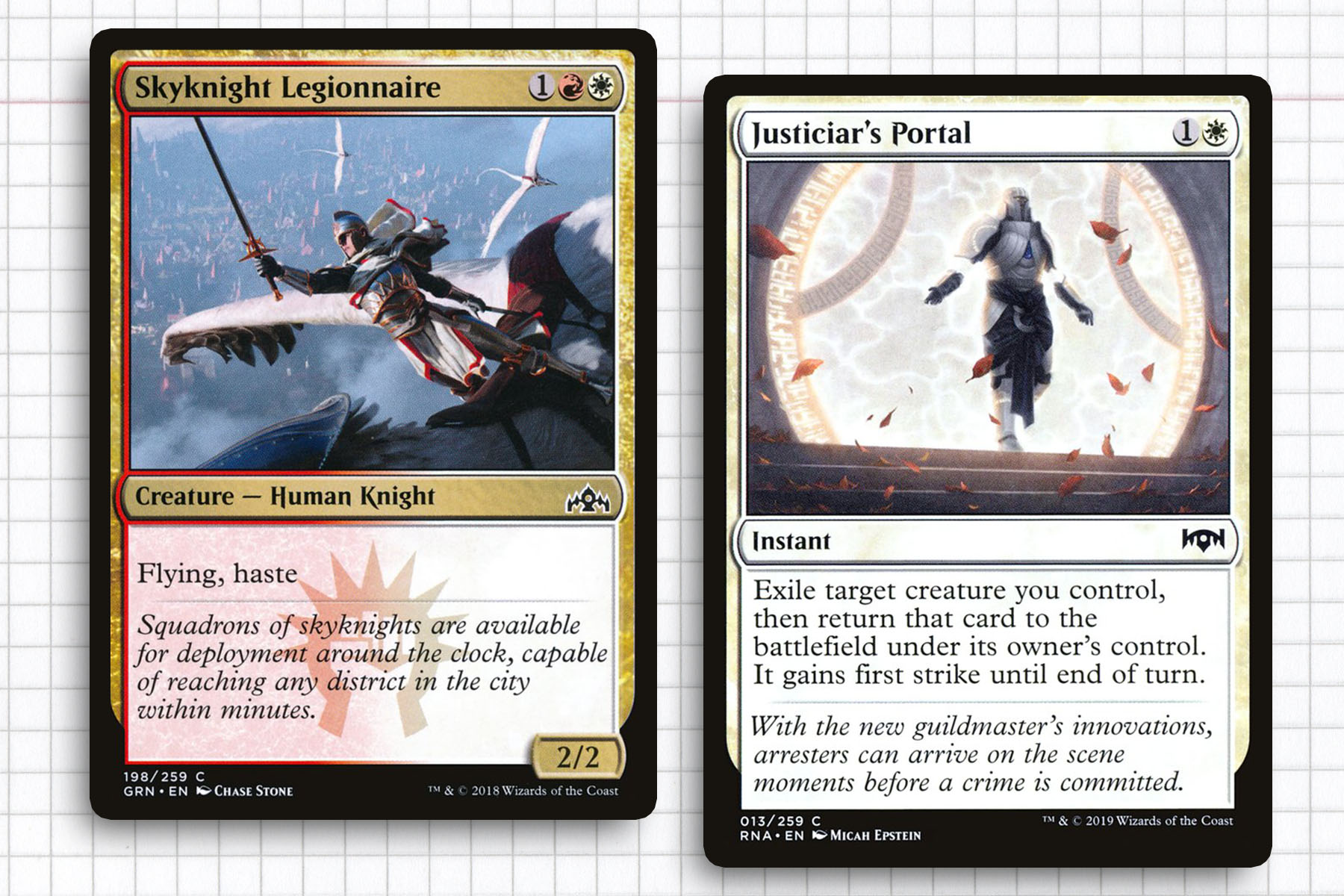
1. Justiciar’s Portal
As many players who were around the game in its early years can tell you, spells were ridiculous right off the bat. That’s why makes finding a common now that could outclass an Alpha uncommon, let alone a rare was so hard. Without a question, one of the mechanics that would have been overestimated in terms of its power would have been a Flicker effect. Even six years into the game, this effect was a rare sorcery that merely exiled a creature and returned it to play.
While it may not be the most impressive card that can currently be opened in packs of Ravnica Allegiance, Justiciar’s Portal does so much for so cheap and would have been considered essential alongside Clone or Craw Wurm. All while gaining first strike.
What do you think? Any playable Standard common cards you wish could have been part of the game since the beginning, but first as a rare? Join me next time, as I dive into the legendary creatures of Unsanctioned and maybe even more.
Ryan Sainio is a Graphic Designer who writes about EDH and the EDH community. He has been playing Magic: The Gathering since 7th Edition in 2002 and values flavorful and fun gameplay over competitively optimized decks.

